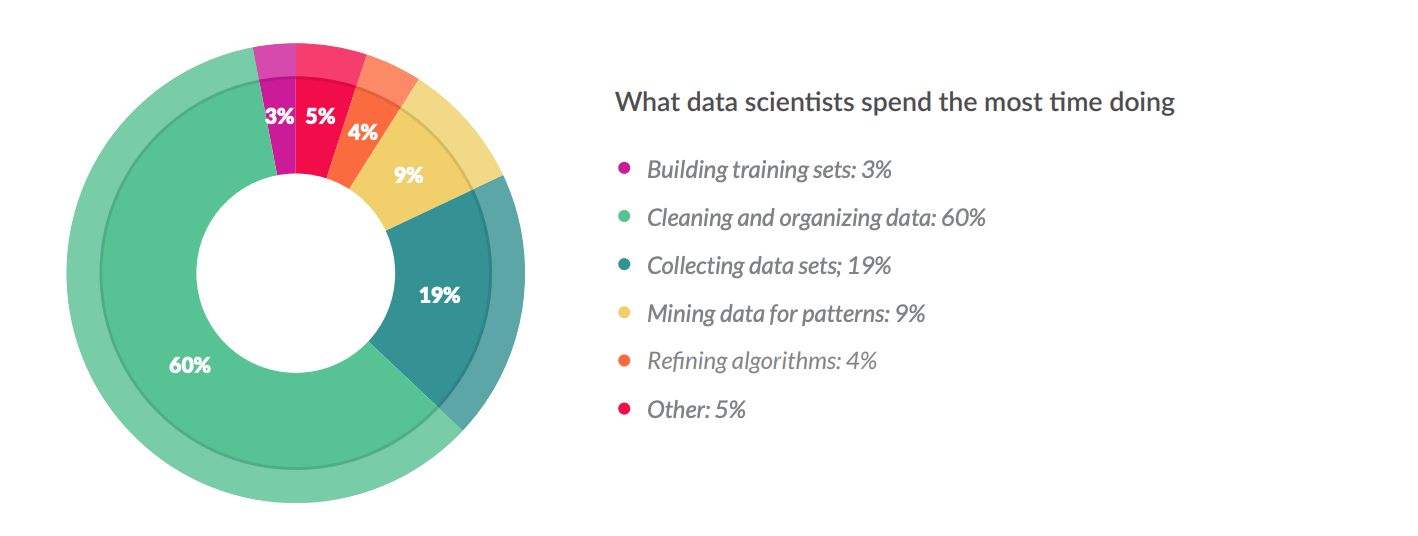Demystifying AI: Part 2
In part 2, we take a look at what data scientists spend their time doing, and what type of algorithms we use for different use cases.

In Part 1 of this series, we started to look at some of the bigger concepts around AI, such as actual definitions, the difference between AI and Machine Learning and what AI is good at.
And whilst we think about AI as being the realm of data scientists working with algorithms and complex calculations, the reality is a bit more mundane than that and pretty similar to any type of data project.
As with any other data project, the following fundamentals are still key concepts to deploying AI solutions:
- data access
- data preparation
- defined business case
- governance
- oversight
In fact, this study by Crowdflower indicated that Data Scientists spend roughly 80% of their time working on accessing data and data preparation:

But enough of the data prep stuff, let’s actually talk algorithms.
Types of Machine Learning Algorithms
In machine learning, there are two core categories of algorithms that look at data in slight different ways, and lead to being used in different use cases.
Supervised
The goal here is to predict a target variable. This can be broken down further into a category, or a numerical value. Or what is called Classification and Regression.
Examples:
- Predict the sales price of a house
- Predict the likelihood of a claim
- Forecast the weather
- Classify a car as a ‘write-off’
Unsupervised
The goal here is to identify patterns. This could be grouping similar individuals or to identify fraud. We would also call this Clustering and Anomaly Detection.
Examples:
- Segmentation of customers according to their behaviour
- Topic identification from feedback
- Identifying potential credit card fraud
For the following use cases, have a think about whether they would use a Supervised or Unsupervised algorithm, especially the last one:
- Predicting mortgage defaults
- Forecasting lifetime spend
- Grouping songs into genre
- Predicting amount of snowfall
- Segmenting website visitors
- Recommending movies
Are there existing tasks or challenges in your business where you think you could use AI to improve decision-making or use data to gain a competitive advantage?
In Part 3, we’ll take a look at some other key concepts that any individual and business needs to think about before putting AI to work.





Comments ()